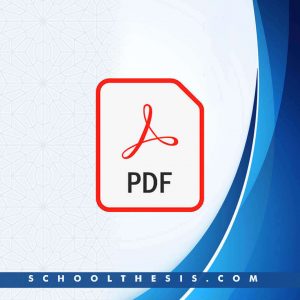
Studies on Fertilizer Nitrogen and Cutting Management of Sown Grass and Legume Pastures in Pure and Mixed Swards
Quick Navigation for Final Year Undergraduates, Masters (Thesis), and Ph.D. Dissertation Students Who Need Our Services on Their Research Works
| Find More Project Topics | FIND HERE |
| Hire Us for Thesis Works | HIRE NOW |
| Hire Us for Project Works | HIRE NOW |
| Hire Us for Seminar Works | HIRE NOW |
| Hire Us for Assignments | HIRE NOW |
| Hire Us for Proposals | HIRE NOW |
| Contact Us | HERE NOW |
Abstract on Studies on Fertilizer Nitrogen and Cutting Management of Sown Grass and Legume Pastures in Pure and Mixed Swards
Three field experiments were conducted at the Teaching and Research Farm of the
Department of Crop Science, Faculty of Agriculture, University of Nigeria, Nsukka. In the
first experiment, the effects of fertilizer-N application and cutting management on
establishment, growth and yield of guinea grass (Panicum maximum) were investigated.
The experiment was a 4 x 4 factorial laid out in a randomized complete block design with
three replications. Treatments comprised four levels of Nitrogen of 0, 150, 300, and 450
kg N ha-1 and four harvesting frequencies of 3-, 6-, 9- and 12-weekly intervals. A second
experiment was conducted using guinea grass/verano stylo (Stylosanthes hamata) mixed
swards.
The experiment was a 3 x 3 x 2 factorial laid out in a randomized complete block
design with three replications. Treatments comprised three swards types (pure grass, pure
legume and grass-legume mixed swards), three harvesting frequencies of 4-, 8-, and 12-
weekly intervals and two levels of nitrogen at 0, and 300 kg N ha-1. The third experiment
was conducted to evaluate the effects of two cutting frequencies (4- and 8-weekly
intervals) on the growth and yield of four legumes (Lablab purpureus, Stylosanthes
hamata, Centrosema pascuorum and Stylosanthes guyanensis) and four grasses (Sorghum
almum, Panicum maximum, Chloris gayana and Andropogon gayanus). Basal applications
of muriate of potash (75 kg K ha-1) and single superphosphate (44 kg P ha-1) were also
made by broadcasting in all the experiments. In the first experiment, tiller number per
square metre, plant height and grass dry matter yield were increased by 44%, 6% and
53%, respectively, during the establishment year when fertilizer-N rate was increased from
0 to 450 kg N ha-1. Grass dry matter yield was increased by 41% and 149% when the
interval between cuts was increased from 3- to 12-weekly intervals at the first and fourth
harvest years, respectively.
Plots cut at 3- or 6- weeks intervals exhibited much greater
weed proportion than those cut 9-, or 12-weekly intervals. Increasing the interval between
harvests from 3 to 12 weeks increased the proportion of stem relative to leaf blade in the
grass swards. The proportion of inflorescence, plant height and dry matter percentages,
were generally increased by increasing the interval between cuts. Tiller number decreased
with increasing interval of cut. The total annual herbage dry matter yield was increased by
32% and 48% in 2001 and 2004, respectively, when fertilizer-N was increased from 0 to
450 kg N ha-1. Increasing the N rate from 0 to 450 kg N ha-1 increased the proportion of
stem relative to the leaf blade in the grass swards. Plant height and tiller number were
increased with increase in N application while the dry matter percentage was generally
decreased with incremental application of nitrogen. A combination of 12-weekly interval
of cut with 300 kg N ha-1 gave a significantly higher forage grass herbage dry matter yield
compared with the values got from the 3- or 6-weekly interval combined with any N rate.
Fertilizing at 300 or 450 kg N ha-1 when combined with cutting at 9 or 12-weekly interval
between cuts was more effective in suppressing weed growth and weed dry matter as a
proportion of the total herbage dry matter. The N % and crude protein contents in the leaf,
stem and in total herbage dry matter decreased significantly with increasing interval
between cuts. Yield of crude protein in the total herbage was significantly higher when
cutting was done every 6 weeks compared with when done every 9 weeks. Nitrogen
fertilizer x cutting frequency interaction effects on N %, crude protein contents and crude
protein yields in the crop fractions and in total herbage dry matter were not statistically
significant. On the average, the crude protein and mineral contents were higher in the leaf
fraction than in the stem and inflorescence fractions. In the second experiment, herbage
production was 16% and 69% higher on guinea grass/stylo swards in 2006 and 2007,
respectively, compared with the yields for the pure guinea grass swards. Grass dry matter
yield as a proportion of the total herbage dry matter was significantly increased from 45%
Disclaimer
This research material is intended for academic use only and should be used as a guide in constructing your research project and seminar presentation. You should never duplicate the content word for word (verbatim), as SCHOOLTHESIS.COM will not be held liable for anyone who does.
The purpose of publishing this material is to alleviate the stress of hopping from one school library to the next in search of research materials. This service is lawful because all educational institutions allow students to read past projects, papers, books, and articles while working on their own.
SCHOOL THESIS is merely giving this information as a research reference. Use the document as a reference or structure for your own research paper. This paper’s content should be able to assist you in coming up with new ideas and thoughts for your own study
Studies on Fertilizer Nitrogen and Cutting Management of Sown Grass and Legume Pastures in Pure and Mixed Swards research paper, should only be used as a guide.
